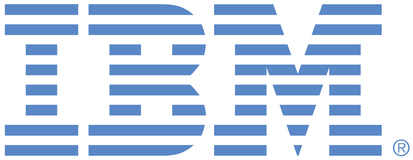
This portal is to open public enhancement requests against products and services offered by the IBM Data & AI organization. To view all of your ideas submitted to IBM, create and manage groups of Ideas, or create an idea explicitly set to be either visible by all (public) or visible only to you and IBM (private), use the IBM Unified Ideas Portal (https://ideas.ibm.com).
Shape the future of IBM!
We invite you to shape the future of IBM, including product roadmaps, by submitting ideas that matter to you the most. Here's how it works:
Search existing ideas
Start by searching and reviewing ideas and requests to enhance a product or service. Take a look at ideas others have posted, and add a comment, vote, or subscribe to updates on them if they matter to you. If you can't find what you are looking for,
Post your ideas
Post ideas and requests to enhance a product or service. Take a look at ideas others have posted and upvote them if they matter to you,
Post an idea
Upvote ideas that matter most to you
Get feedback from the IBM team to refine your idea
Specific links you will want to bookmark for future use
Welcome to the IBM Ideas Portal (https://www.ibm.com/ideas) - Use this site to find out additional information and details about the IBM Ideas process and statuses.
IBM Unified Ideas Portal (https://ideas.ibm.com) - Use this site to view all of your ideas, create new ideas for any IBM product, or search for ideas across all of IBM.
ideasibm@us.ibm.com - Use this email to suggest enhancements to the Ideas process or request help from IBM for submitting your Ideas.
IBM Employees should enter Ideas at https://ideas.ibm.com

Hello Larry, We hope the PATH is sufficient and due to no further comments we are closing this idea. We do appreciate you submitting Ideas to the Db2 for z/OS organization and encourage you to continue to do so.
Thank you,
Db2 for z/OS Development
Hello Larry, Please let us know if the path is not sufficient, can you please explain why?
Thank you.
Db2 for z/OS Development
If the function is unqualified, we go through Unqualified Function Resolution (as documented here - https://www.ibm.com/support/knowledgecenter/en/SSEPEK_12.0.0/sqlref/src/tpc/db2z_functionresolution.html )
>>
Unqualified function resolution
When a function is invoked without a qualifier, Db2 searches the list of schemas in the SQL path to resolve which function instance to execute. For each schema in the SQL path, Db2 searches the schema for candidate functions based on the following criteria:
The name of the function instance must match the name in the function invocation.
The number of input parameters in the function instance must match the number of function arguments in the function invocation.
The authorization ID of the statement must have the EXECUTE privilege on the function instance.
If Db2 does not find any candidate functions, an error is returned.
If no function meets these criteria, an error is returned. If one or more candidate functions are found in the schema, this set of candidate functions is processed for best fit.
For a function invocation that contains untyped parameter markers, the data types of those parameter markers are considered to match or be promotable to the data types of the parameters in the function instance.
Determining the best fit
More than one function with the same name might exist that is a candidate for execution. In that case, Db2 determines which function is the best fit for the invocation by comparing the data types of the parameters of each function in the set of candidate functions to determine which function satisfies the best fit requirements.
SQL path considerations for built-in functions
Function resolution applies to all functions, including built-in functions and other functions provided by Db2. If a function is invoked without its schema name, the SQL path is searched.
<<
Our suggestion would be to to use the PATH.
If the path is not sufficient, can you please explain why?